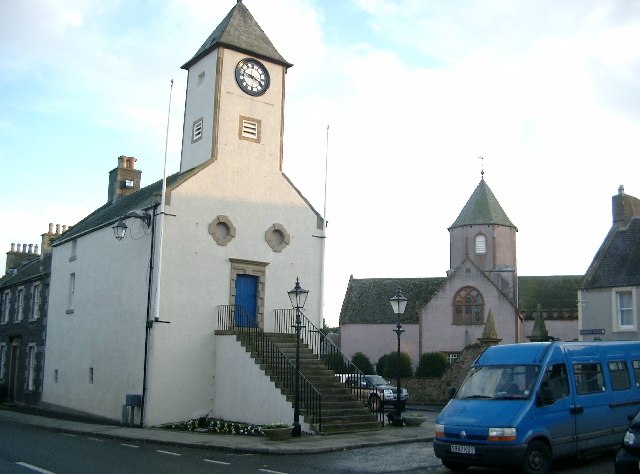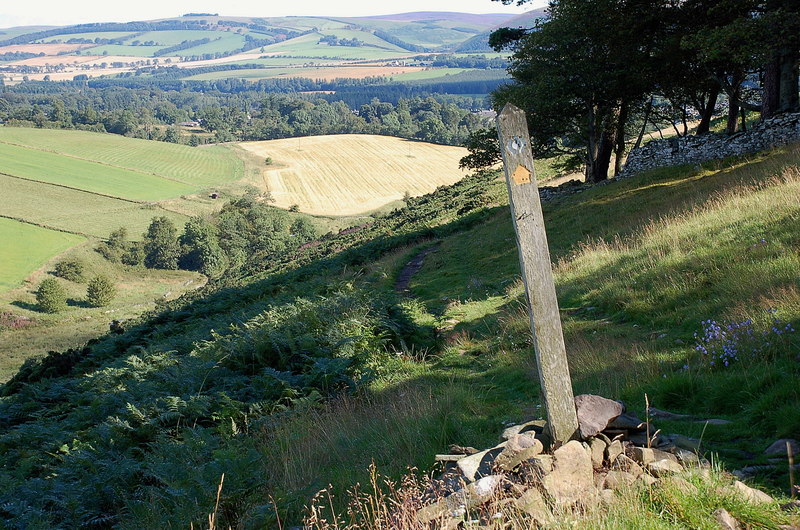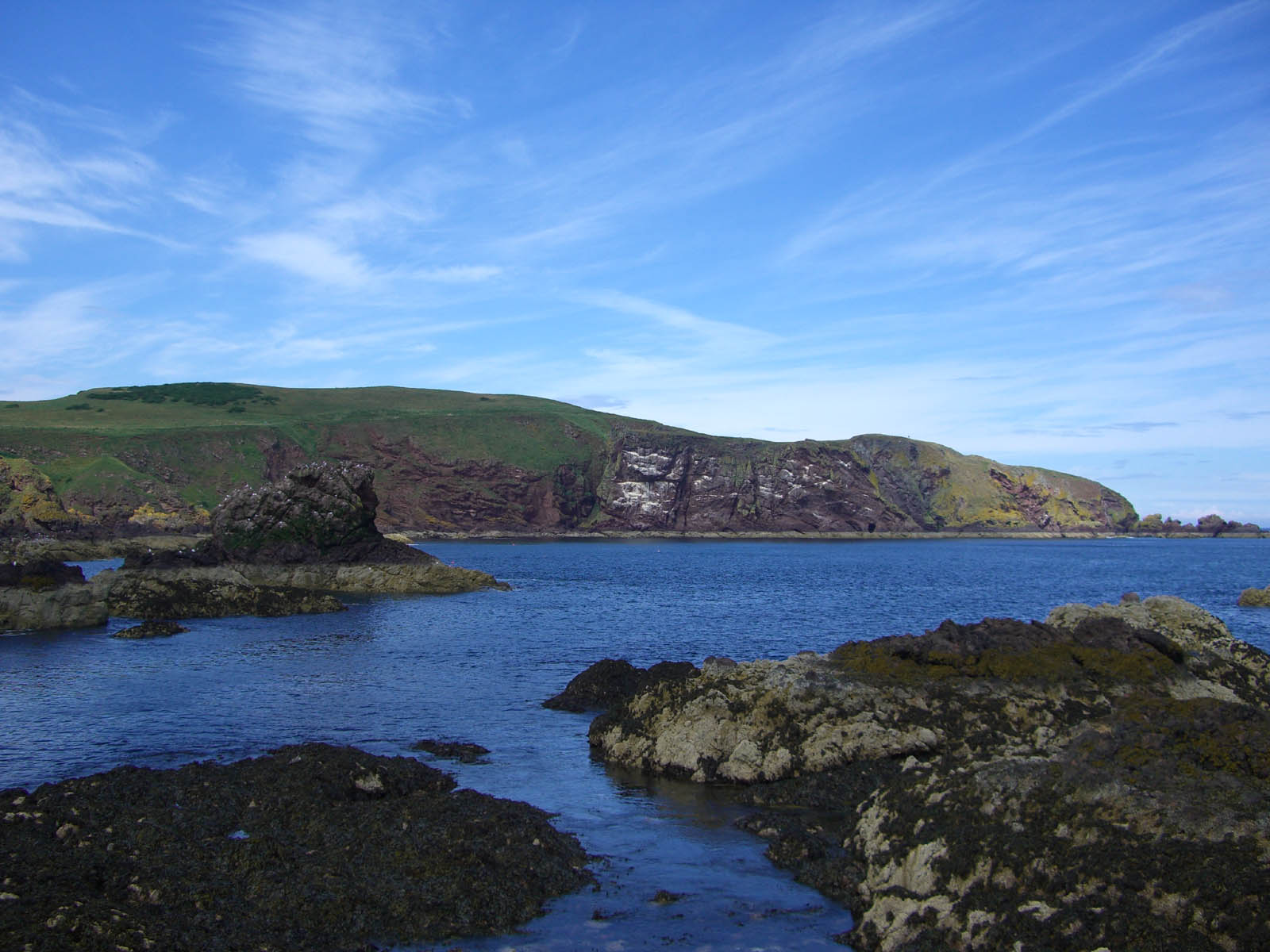|
Lauder
The former Royal Burgh of Lauder (, gd, Labhdar) is a town in the Scottish Borders in the historic county of Berwickshire. On the Southern Upland Way, the burgh lies southeast of Edinburgh, on the western edge of the Lammermuir Hills. Etymology Although Lauder sits in the valley of Leader Water, Watson notes that the names Lauder and Leader appear to be unconnected. In the earliest sources Lauder appears as ''Lawedder'' and ''Loweder''. The name may be derived from the Brittonic ''lǭwadr'', meaning "washing or bathing place" (Breton ''laouer''). Or else, Lauder may be named from a word related to Middle Welsh ''llawedrawr'', "a heap of ruins". Medieval history Below Lauder are the lands of Kedslie which were bounded on the west by a road called "Malcolm's rode", and it is thought this formed part of the Roman road known as Dere Street, which passed through Lauder. Hardie suggests that it had been reconditioned by Malcolm III for use in his almost constant warfare against ... [...More Info...] [...Related Items...] OR: [Wikipedia] [Google] [Baidu] |
Lauderdale
Lauderdale is the valley of the Leader Water (a tributary of the Tweed) in the Scottish Borders. It contains the town of Lauder, as well as Earlston. The valley is traversed from end to end by the A68 trunk road, which runs from Darlington to Edinburgh. Roman road Many ancient camps, and many ''tumuli'', are found in Lauderdale. The Roman road into Scotland, Dere Street, which means "the road into the country of the wild animals", crossed a ford at Newstead, near Melrose, where there had been a Roman fort and garrison, and entered Lauderdale. Dere Street is said to have been reconditioned by King Malcolm Canmore and probably used by him in his almost constant warfare against England. The Roman road has now been traced from the Tweed through Lauderdale to Soutra. Etymology Lauderdale's name comes from the town of Lauder rather than the Leader Water. The relationship between the names "Leader" and "Lauder" is very obscure; despite their similarity, they may have different o ... [...More Info...] [...Related Items...] OR: [Wikipedia] [Google] [Baidu] |
Midlothian South, Tweeddale And Lauderdale (Scottish Parliament Constituency)
Midlothian South, Tweeddale and Lauderdale is a constituency of the Scottish Parliament ( Holyrood) covering parts of the council areas of Midlothian and Scottish Borders. Created for the 2011 election, it elects one Member of the Scottish Parliament (MSP) by the plurality (first past the post) method of election. It is one of nine constituencies in the South Scotland electoral region, which elects seven additional members, in addition to nine constituency MSPs, to produce a form of proportional representation for the region as a whole. The constituency covers parts of the former constituencies of Midlothian and Tweeddale, Ettrick and Lauderdale. The remainder of Midlothian council area lies within the constituency of Midlothian North and Musselburgh, whilst the remainder of Scottish Borders forms the Ettrick, Roxburgh and Berwickshire constituency. Electoral region The other eight constituencies of the South Scotland region are Ayr, Carrick, Cumnock and Doon Vall ... [...More Info...] [...Related Items...] OR: [Wikipedia] [Google] [Baidu] |
Scottish Borders
The Scottish Borders ( sco, the Mairches, 'the Marches'; gd, Crìochan na h-Alba) is one of 32 council areas of Scotland. It borders the City of Edinburgh, Dumfries and Galloway, East Lothian, Midlothian, South Lanarkshire, West Lothian and, to the south-west, south and east, the English counties of Cumbria and Northumberland. The administrative centre of the area is Newtown St Boswells. The term Scottish Borders, or normally just "the Borders", is also used to designate the areas of southern Scotland and northern England that bound the Anglo-Scottish border. Geography The Scottish Borders are in the eastern part of the Southern Uplands. The region is hilly and largely rural, with the River Tweed flowing west to east through it. The highest hill in the region is Broad Law in the Manor Hills. In the east of the region, the area that borders the River Tweed is flat and is known as 'The Merse'. The Tweed and its tributaries drain the entire region with the rive ... [...More Info...] [...Related Items...] OR: [Wikipedia] [Google] [Baidu] |
Dryburgh Abbey
Dryburgh Abbey, near Dryburgh on the banks of the River Tweed in the Scottish Borders, was nominally founded on 10 November (Martinmas) 1150 in an agreement between Hugh de Morville, Constable of Scotland, and the Premonstratensian canons regular from Alnwick Abbey in Northumberland. The arrival of the canons along with their first abbot, Roger, took place on 13 December 1152. It was burned by English troops in 1322, after which it was restored only to be again burned by Richard II in 1385, but it flourished in the fifteenth century. It was finally destroyed in 1544, briefly to survive until the Scottish Reformation, when it was given to the Earl of Mar by James VI of Scotland. It is now a designated scheduled monument and the surrounding landscape is included in the Inventory of Gardens and Designed Landscapes in Scotland. David Steuart Erskine, 11th Earl of Buchan Earl of Buchan bought the land in 1786. Sir Walter Scott and Douglas Haig are buried in its grounds. Their res ... [...More Info...] [...Related Items...] OR: [Wikipedia] [Google] [Baidu] |
Hugh De Morville, Constable Of Scotland
Hugh de Morville (died 1162) of Appleby in Westmorland, England, hereditary Constable of Scotland, was a Norman knight who made his fortune in the service of David FitzMalcolm (d.1153), Prince of the Cumbrians, later King of Scotland. Origins Hugh came from Morville in the Cotentin Peninsula, in northern France. His parentage is unclear. According to Barrow his father was probably Richard de Morville who in the early twelfth century witnessed charters made by Richard de Redvers relating to Montebourg and the church of St. Mary in the castle of Néhou, but though Keats-Rohan gives that man other possible sons, she does not similarly associate Hugh with Richard. In service of David of Scotland Prince David of Scotland held Cotentin in northern France, given to him by King Henry I of England some time after 1106. Soon after, Hugh de Morville joined David's small military retinue in France. In 1113, following his marriage, Prince David was made Earl of Huntingdon and Northam ... [...More Info...] [...Related Items...] OR: [Wikipedia] [Google] [Baidu] |
Berwickshire, Roxburgh And Selkirk (UK Parliament Constituency)
Berwickshire, Roxburgh and Selkirk is a constituency of the British House of Commons, located in the south of Scotland within the Scottish Borders council area. It elects one Member of Parliament (MP) at least once every five years using the first-past-the-post system of voting. The constituency name comes from the three counties it covers; Berwickshire, Roxburghshire and Selkirkshire. A mostly rural constituency, it includes the towns of Coldstream, Duns, Eyemouth, Galashiels, Hawick, Jedburgh, Kelso, Melrose and Selkirk. Boundaries As created by the Fifth Review of the Boundary Commission for Scotland. The Berwickshire, Roxburgh and Selkirk constituency covers part of the Scottish Borders council area. The rest of the council area is covered by the Dumfriesshire, Clydesdale and Tweeddale constituency, which also covers part of the Dumfries and Galloway council area and part of the South Lanarkshire council area. The Berwickshire, Roxburgh and Selkirk constitu ... [...More Info...] [...Related Items...] OR: [Wikipedia] [Google] [Baidu] |
Berwickshire
Berwickshire ( gd, Siorrachd Bhearaig) is a historic county, registration county and lieutenancy area in south-eastern Scotland, on the English border. Berwickshire County Council existed from 1890 until 1975, when the area became part of the Borders region, with most of the historic county becoming part of the lower-tier Berwickshire district. Berwickshire district was abolished in 1996, when all the districts in the Borders region merged to become the Scottish Borders council area. The county takes its name from Berwick-upon-Tweed, its original county town, which was part of Scotland at the time of the county's formation in the twelfth century, but became part of England in 1482 after several centuries of swapping back and forth between the two kingdoms. After the loss of Berwick, Duns and Greenlaw both served as county town at different periods. The low-lying part of Berwickshire between the Tweed and the Lammermuirs is known as "the Merse", from an old Scots w ... [...More Info...] [...Related Items...] OR: [Wikipedia] [Google] [Baidu] |
Berwick-upon-Tweed
Berwick-upon-Tweed (), sometimes known as Berwick-on-Tweed or simply Berwick, is a town and civil parish in Northumberland, England, south of the Anglo-Scottish border, and the northernmost town in England. The 2011 United Kingdom census recorded Berwick's population as 12,043. The town is at the mouth of the River Tweed on the east coast, south east of Edinburgh, north of Newcastle upon Tyne, and north of London. Uniquely for England, the town is slightly further north than Denmark's capital Copenhagen and the southern tip of Sweden further east of the North Sea, which Berwick borders. Berwick was founded as an Anglo-Saxon settlement in the Kingdom of Northumbria, which was annexed by England in the 10th century. A civil parish and town council were formed in 2008 comprising the communities of Berwick, Spittal and Tweedmouth. It is the northernmost civil parish in England. The area was for more than 400 years central to historic border wars between the Kingdoms of Eng ... [...More Info...] [...Related Items...] OR: [Wikipedia] [Google] [Baidu] |
Roxburgh, Ettrick And Lauderdale
Roxburgh, Ettrick and Lauderdale (''Rosbrog, Eadaraig agus Srath Labhdair'' in Scottish Gaelic) is a lieutenancy area of Scotland. The lieutenancy area was created on 1 April 1996, when local government was reorganised across Scotland under the Local Government etc. (Scotland) Act 1994. The lieutenancy area covers the combined area of the two abolished local government districts of Roxburgh and Ettrick and Lauderdale, which had been nominally separate lieutenancy areas prior to 1996, although both lieutenancies were held by John Scott, 9th Duke of Buccleuch. The lieutenancy area broadly corresponds to the historic counties of Roxburghshire and Selkirkshire, plus small parts of Midlothian and Berwickshire. See also Lord Lieutenant of Roxburgh, Ettrick and Lauderdale This is a list of people who have served as Lord Lieutenant of Roxburgh, Ettrick and Lauderdale. This office replaced the Lord Lieutenant of Roxburghshire and the Lord Lieutenant of Selkirkshire in 1975. *''Buccl ... [...More Info...] [...Related Items...] OR: [Wikipedia] [Google] [Baidu] |
Alan Of Galloway
Alan of Galloway (before 1199 – 1234), also known as Alan fitz Roland, was a leading thirteenth-century Scottish magnate. As the hereditary Lord of Galloway and Constable of Scotland, he was one of the most influential men in the Kingdom of Scotland and Irish Sea zone. Alan first appears in courtly circles in about 1200, about the time he inherited his father's possessions and offices. After he secured his mother's inheritance almost two decades later, Alan became one of the most powerful magnates in the Scottish realm. Alan also held lands in the Kingdom of England, and was an advisor of John, King of England concerning ''Magna Carta''. Alan later played a considerable part in Alexander II, King of Scotland's northern English ambitions during the violent aftermath of John's repudiation of ''Magna Carta''. Alan participated in the English colonisation of Ulster, receiving a massive grant in the region from the English king, and simultaneously aided the Scottish crown again ... [...More Info...] [...Related Items...] OR: [Wikipedia] [Google] [Baidu] |
Lammermuir Hills
The Lammermuirs are a range of hills in southern Scotland, forming a natural boundary between East Lothian and the Borders. The name "Lammermuir" comes from the Old English ''lambra mōr'', meaning "moorland of the lambs". Geology The Lammermuir Hills are formed from a succession of Silurian and Ordovician age marine sediments known as greywackes together with siltstones, shales and mudstones. They are assigned to the Gala Group. Unconformably overlying these highly faulted and folded strata are outcrops of the early Devonian age Great Conglomerate Formation which forms a part of the Reston Group of Old Red Sandstone rocks. These coarse red-purple conglomerates underlie a band of country in the east between Longformacus and Oldhamstocks and also occur in an isolated outcrop east of Soutra Hill and beneath the Dun Law Wind Farm on the western margin of the hills. The same strata extend down Lauderdale on the western margin of the hills. Numerous dykes of different li ... [...More Info...] [...Related Items...] OR: [Wikipedia] [Google] [Baidu] |
Malcolm III
Malcolm III ( mga, Máel Coluim mac Donnchada, label= Medieval Gaelic; gd, Maol Chaluim mac Dhonnchaidh; died 13 November 1093) was King of Scotland from 1058 to 1093. He was later nicknamed "Canmore" ("ceann mòr", Gaelic, literally "big head"; Gaelic meaning and understood as "great chief"). Malcolm's long reign of 35 years preceded the beginning of the Scoto-Norman age. Henry I of England and Eustace III of Boulogne were his sons-in-law, making him the maternal grandfather of Empress Matilda, William Adelin and Matilda of Boulogne. All three of them were prominent in English politics during the 12th century. Malcolm's kingdom did not extend over the full territory of modern Scotland: many of the islands and the land north of the River Oykel were Scandinavian, and south of the Firth of Forth there were numerous independent or semi-independent realms, including the kingdom of Strathclyde and Bamburgh, and it is not certain what if any power the Scots exerted there on Malc ... [...More Info...] [...Related Items...] OR: [Wikipedia] [Google] [Baidu] |







